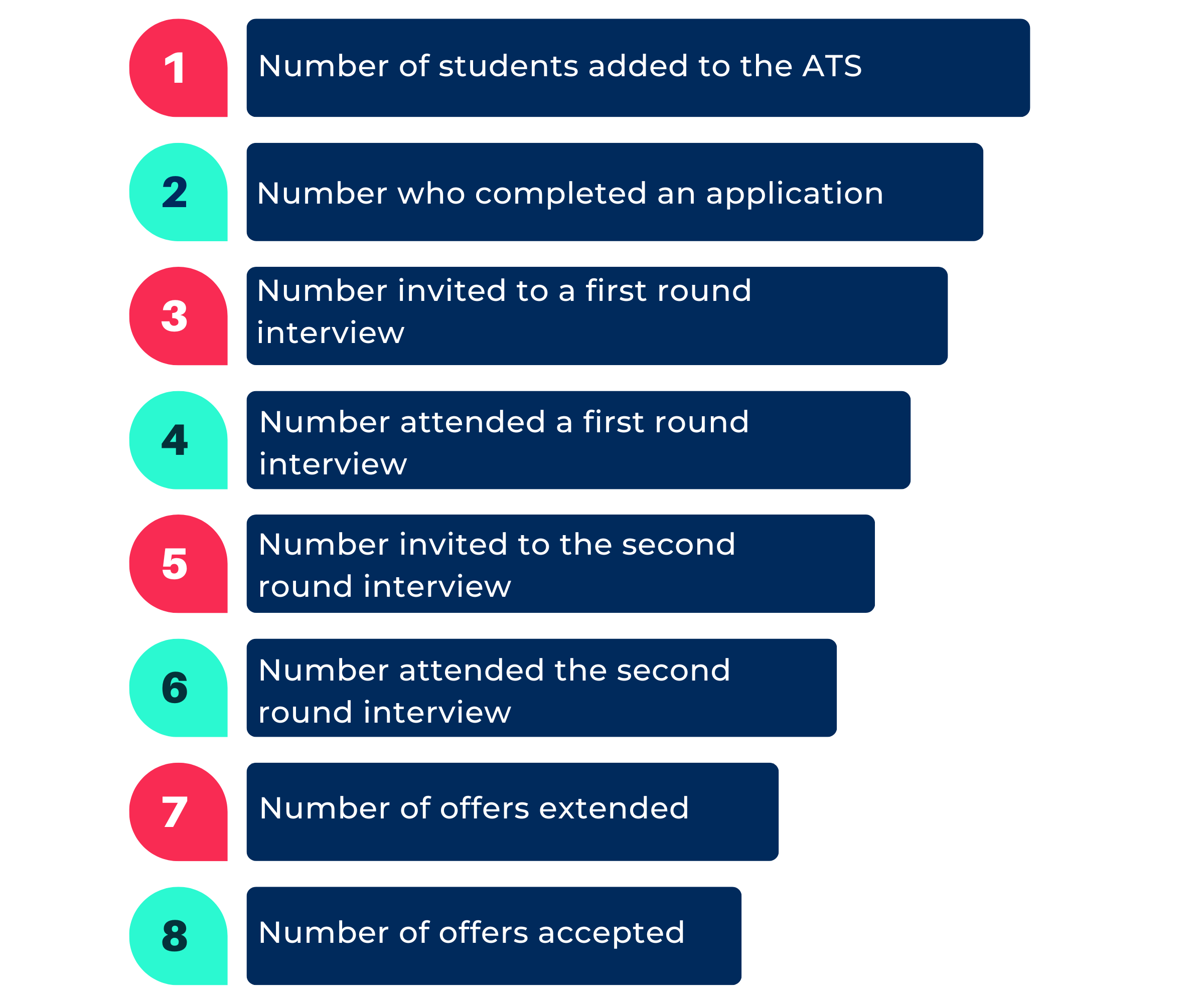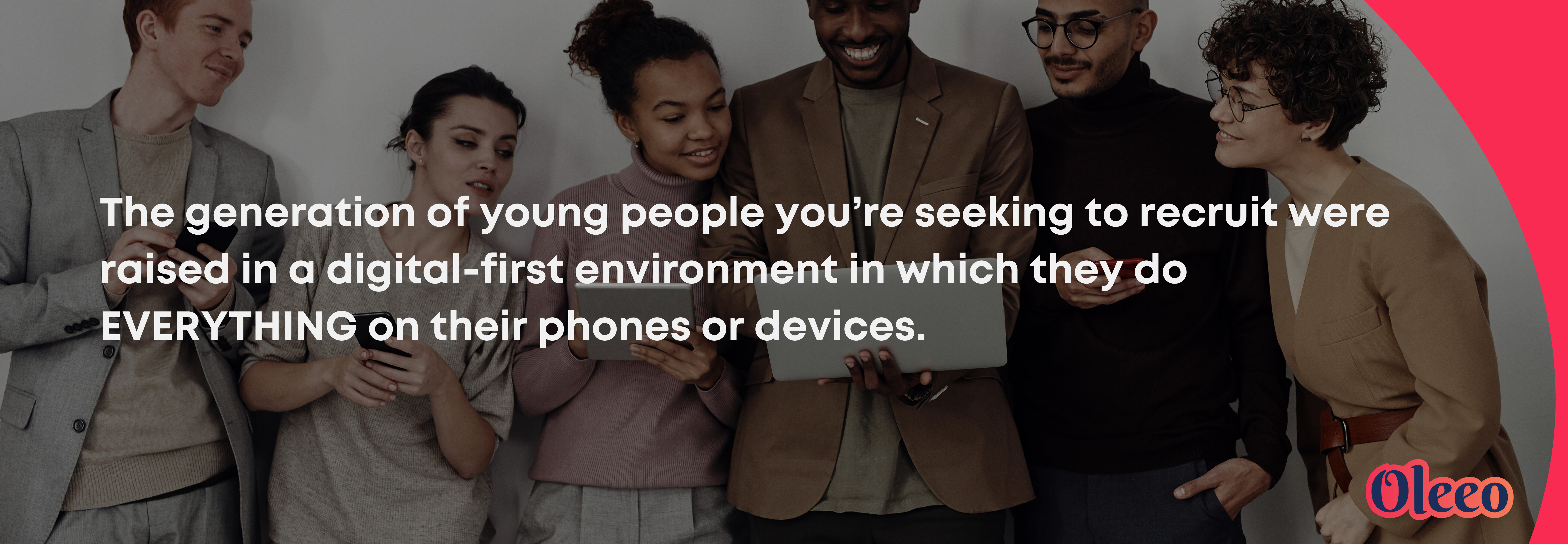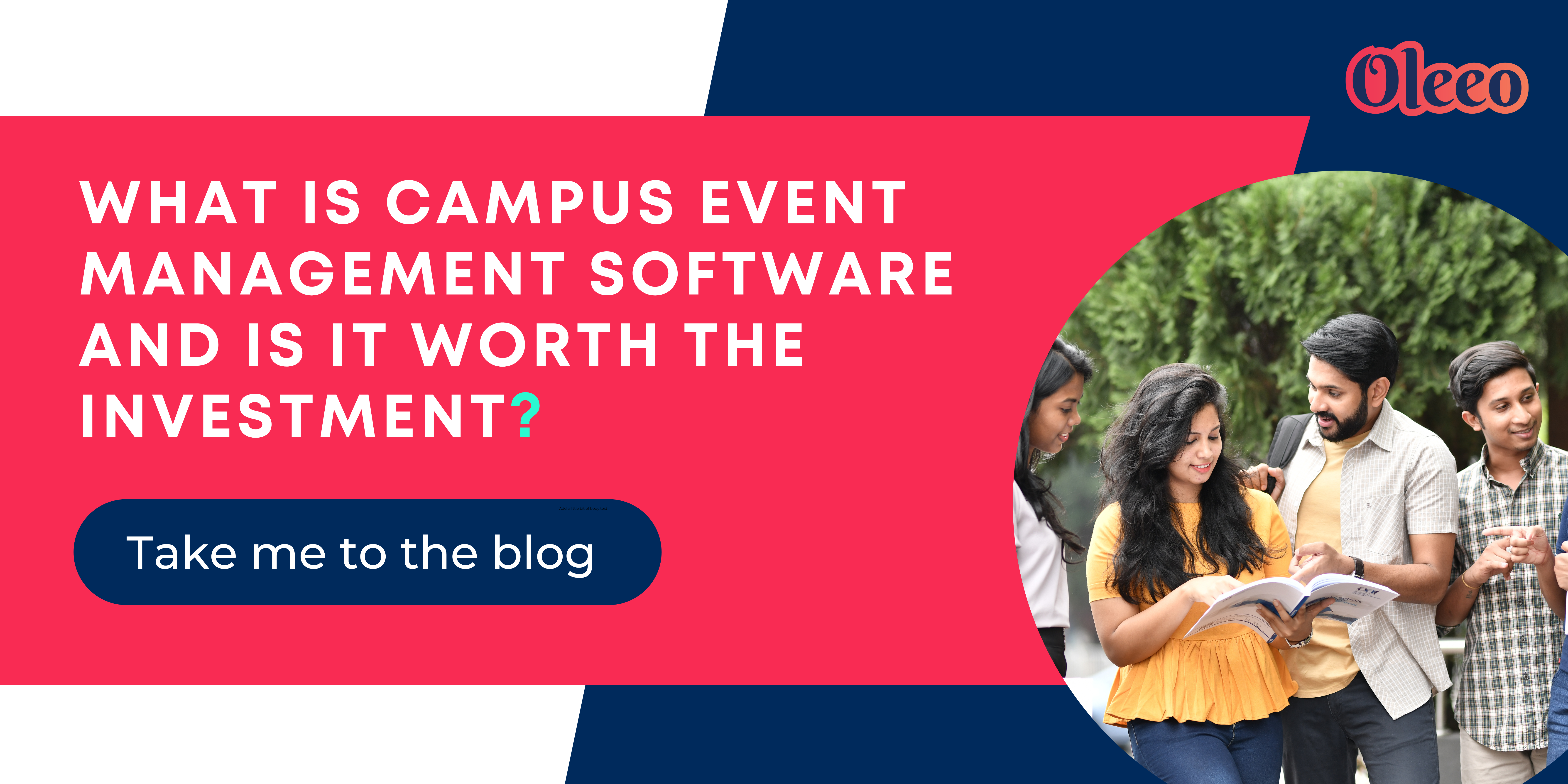How Do You Squeeze Everything Out Of Your Campus Recruiting Events?

We desperately wish there was a sexy answer to this question, but in the end it boils down to one word…
Data.
If it helps, Forbes has described data as “the new gold”. Which is a fancy way of saying it’s value is universally recognised, it’s easy to monetize, and it shines when you hold it up to the light.
Okay, maybe not that last one, but you get the point. The data you gather at your campus recruiting events contains the key to improving your end results, boosting your ROI, and helping you figure out how to best utilize your resources.
The only downside is that if you haven’t been collecting data from your campus recruiting events over the last few years, you’re going to be starting from scratch. But that isn’t the end of the world. If you’ve been gathering data for a while, you can start applying these strategies straight away. Otherwise, you can use these ideas to help you figure out what you need to be measuring THIS year, so you’ll have the data you need to improve your results NEXT year.
Define your funnel so you can identify weak points
This is a basic marketing structure so we expect you’ll already have this outlined. But if it only exists in your head or you haven’t reviewed it in a while, dig it out and make sure you have the basic structure defined.
Most campus recruiting event funnels are broadly similar, but you’ll likely have some quirks that are unique to your business. It might look something like this:

The number at each stage of the funnel will always get progressively smaller, but what you’re looking for are the big downward jumps. For example, if the number of first-round interview invites is noticeably larger than the number of first-round interviews attended, then you may have a communication problem. Or, if there’s a sizable gap between the number of offers extended and the number of offers accepted, you might have a competitor that’s moving faster than you.
In addition to reviewing your funnel as a whole, it’s also beneficial to review the funnel for specific schools. Significant negative outliers might indicate that a specific location needs a different approach, or simply that it’s a school you should consider removing from your future schedule.
Review your demographics and look for gaps
Assuming you’re gathering the right level of data, you should be able to pull a report that shows the ratios of, for example, women to men, or even top-performing students to average students.
If the data reveals any of the ratios to be lower than is desirable for your goals, you can adjust your approach accordingly.
You can take this even further by arranging events specifically for underrepresented demographics. If you’re not seeing enough female attend and apply, you could put on a women-only breakfast meeting.
Don’t just look for problems – look for successes
It’s easy when reviewing the data to focus on the shortfalls, but while you should definitely identify and seek to resolve weaknesses in your funnel, your successes can be just as instructive.
If you have a portion of your funnel that is performing well above average, dig a bit deeper to find out why and see if it’s something you can replicate in other areas, or double-down on.
Review your data throughout the campus recruitment season
It’s reasonable to conclude that the most powerful insights from your data are going to come at the end of the campus recruiting event season, but it’s crucial to look at the data at regular intervals, throughout the period.
You might spot a serious drop-off between two steps in your funnel that turns out to be something eminently fixable. Far better to notice this mid-way through the season than at the end.
Automate your data collection
Again, this might seem to go without saying, but we see an awful lot of campus event recruiters still relying on paper applications and scanned resumes, or using some kind of hybrid approach where some data is gathered digitally, but some elements still require handwritten materials.
In either case, you’re slowing down your ability to gather and review data, while also limiting the range of conclusions you’re able to draw from the end results.
Modern recruitment event software worth its salt will have the capabilities to flex to your specific campus recruitment approach, while still giving you the ability to automate ALL of your data collection.
It might require some adjustment in your approach, and some team training (some people find it hard to let go of long-used practices), but in the long-term it’s the only way to get the data you need to compete for the most-talented students.
Did we manage to make data sound fun and exciting? No? Ah well, it was always a long shot.
Hopefully we’ve demonstrated, or at least reminded you, that data is crucial to improving your long-term results.
The last point is especially important. A fully-automated data collection process for a campus recruitment event campaign is the gold standard for this industry, not just because it ensures no data is leaking through the cracks, but because it improves the experience for your team AND the students that attend your event.

Allowing them to check-in to your event on their phone, complete an application on their phone, choose their interview date and time on their phone, and even accept a job offer on their phone is not just appreciated, it’s more or less expected.
Make your event fully digital and the students that attend your event will recognize you as a progressive, forward-thinking company. Rely on old-fashioned “paper and pen” systems, or even a hybrid approach, and you’ll give off an entirely different impression.
Oleeo is the only Recruitment Event Solution on the market with a specific campus recruitment event module for managing and tracking your activity. Our Campus Recruiting Software can even be customized to your precise specifications and funnel design.
Enjoy your campus recruitment season, and don’t forget to keep gathering that data. It is the new gold, after all.




